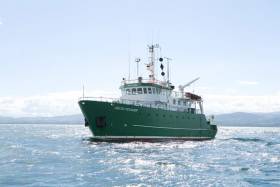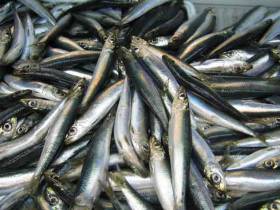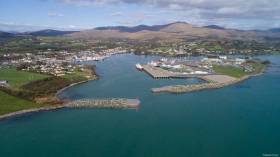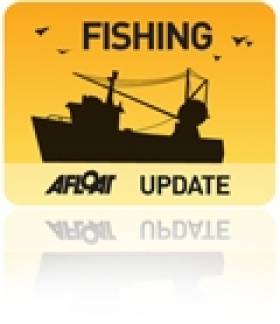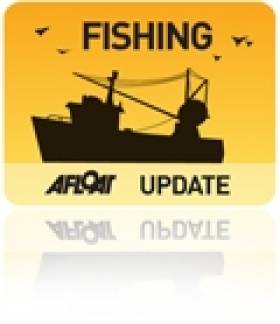Displaying items by tag: herring
New Herring Quota Policy to Improve Fishing Opportunities for Inshore Fishing Families
The Irish Marine Minister, Charlie McConalogue, has announced changes to the 2012 Herring Management Policy in relation to the Herring 6a South quota for non-ringfenced vessels. The Minister has set a minimum allocation of Herring 6a South quota for non-ringfenced vessels under 20 metres in length overall when Ireland's quota for the stock falls below a certain threshold. This decision was made following a full public consultation earlier this year, which attracted almost 90 submissions. The Minister examined the issues raised during the public consultation process and decided that a set quantity of the Herring 6A South quota should be allocated for non-ringfenced vessels when Ireland's quota for the stock is low.
The scientific advice from the International Council for the Exploration of the Seas (ICES) was that both Herring stocks in the North-West (6a South and 6a North) could be managed as commercial stocks in 2023, following a scientific fishery only from 2016-2022. The public consultation carried out by the Minister related to the southern North-West Herring stock (Herring 6a South and 7bc) only. Ireland's quota for this stock for 2023 is set at 1,720 tonnes.
 Marine Minister Charlie McConalogue says the Herring policy change will improve fishing opportunities for rural coastal communities
Marine Minister Charlie McConalogue says the Herring policy change will improve fishing opportunities for rural coastal communities
The Minister's Herring Management Policy of 2012 sets aside 5% of the 6a South quota for vessels under 20 metres in length overall that did not have a qualifying track record for the fishery. However, Minister McConalogue has now decided that where Ireland's North-West Herring quota (6a South & 7bc) in the annual Total Allowable Catch (TAC) and Quota Regulation is less than 7,000 tonnes, for 2023 and future years, the 2012 Herring Policy will be modified, and a set quantity of herring will be made available for non-ringfenced vessels (vessels less than 20 metres in length overall), at a level of 350 tonnes.
The Minister has stated that this change will improve fishing opportunities for the inshore fishing families that are the linchpin of rural coastal communities. The new policy will allocate 95% of the set quantity of herring to vessels less than 15 metres in length overall, and 5% to vessels equal to or greater than 15 metres in length overall but less than 20 metres in length overall. Any adjustments (swaps, carry-over/deductions as provided by EU Regulation) will not be taken into account for establishing this threshold.
Minister McConalogue concluded that he appreciates fully the strong support given by fishers for these conservation measures and for the advice received from the North-West Herring Stakeholder Group during the scientific fishery. This new policy provides certainty to non-ringfenced inshore vessels regarding their Herring quota in Area 6A South.
There are two separate herring stocks off the North-West coast of Ireland. Ireland has a quota for both stocks. The first herring stock is found in Zone 6aS 1, 7b, 7c (Divisions 6.a South of 56°00’N and West of 07°00’W and 7.b–c (North-West and West of Ireland)) (‘6A South’ quota). The second herring stock is found in Zone 6b and 6aN; United Kingdom, and international waters of 5b2 (Division 6.a (North), autumn spawners (West of Scotland)) (‘6A North’ quota).
The Herring stock in 6A South is of more importance and interest to Ireland, given that Ireland has the majority share of the Total Allowable Catch (TAC) of herring in 6A South. Furthermore, from a geographical perspective, the area 6A South has contact with the Irish coastline in the North-West of Ireland, whereas the area 6A North does not. The main stock of interest for the inshore fishers is the 6A South herring stock. Under the 2012 Herring Management Policy, vessels under 10 metres do not have access to an allocation of quota for the herring stock in 6A North.
In accordance with the 2012 Herring Management Policy, the North-West Herring fishery has a ringfenced group for vessels of 10 metres and over, who have established the necessary track record in the years 2006-2010.
The full detail of the Minister’s decision is here
Marine Minister Announces Public Consultation on Herring Stock Management in Northwest
Marine Minister Charlie McConalogue is launching a consultation process on a review of the 2012 Herring Management Policy.
It will focus on the quantity of herring set aside from the southern North-West herring stock (Herring 6A South) for smaller/inshore fishing vessels, which is currently 5% of the quota for vessels under 20m in length that did not have a qualifying track record for the fishery.
The minister received a request from the chairs of the National Inshore Fisheries Forum (NIFF) and North Regional Inshore Fisheries Forum (RIFF) for a review of the 6A South Herring Policy of 2012, in relation to inshore vessels.
“I have carefully considered the request from the NIFF and RIFF and I am satisfied that there are sufficient changed circumstances to justify a limited review of the 2012 policy,” the minister said.
“Inshore fishing families are the linchpin of rural coastal communities and it is important that we continue to seek ways to improve fishing opportunities for this sector.”
Minister McConalogue continued: “When the 5% provision was set in the 2012 Herring Management Policy, it reflected an expectation that Ireland would have a reasonable quota available to it, as had been the case in the years prior to the setting of the policy.
"I am open to considering amendments to this part of the policy so that inshore vessels have a reasonable allocation available to them when the quota available is low, taking into account that this stock is important for our inshore vessels.”
Adding that Ireland is “moving into a better place wit this fishery” after years of closure due to its “poor state”, the minister said: “The scientific advice on the state of the stock is now positive and we can look forward to a good fishery for the fishing fleet, both for inshore and offshore vessels.
"This demonstrates clearly that taking strong conservation measures, when necessary, rebuilds fish stocks. I appreciate fully the strong support given by our fishers for these conservation measures even though they were deprived of a commercial fishery for six years.”
Minister McConalogue said he will shortly be inviting stakeholders and in particular those involved in the fishery over recent years to submit their views.
“To assist consideration, I asked my department to prepare a consultation paper setting out the background and giving possible options. I look forward to good engagement from stakeholders including any alternative proposals put forward during the consultation,” he said.
"Following the consultation, I will consider all the issues involved and make a decision on any justified amendment to the 2012 policy including any new arrangement in the interim or on a longer-term basis,” he added.
Herring Spawning Stock Survey Off West & North West Coasts This December
The Marine Institute’s Fisheries Ecosystems Advisory Services (FEAS) department will undertake a survey of herring off the West and North West Coasts from 1-10 December.
This survey is the fourth in a time series that is hoped will be developed into a long-term index of spawning/pre-spawning herring in ICES area 6a S/7b, for use in stock assessments in the future.
The overall 6a survey (6a N and 6a S/7b) is part of a collaborative partnership between Ireland, the Netherlands and UK (Scotland) that aims to improve understanding of the individual stock components of herring in 6a and 7b.
Next month’s survey will be conducted by the RV Celtic Voyager (callsign EIQN) using a towed body with two split-beam transducers (38 kHz and 120 kHz). The vessel will be trackable online during the survey.
In total around 1,100 nautical miles of cruise track will be undertaken with a mixture of parallel (spaced at 7.5 and 3.5 nm) and zig-zag transects. The vessel will display appropriate lights and signals.
Night operations will involve the towing of the two split-beam transducer. Fishing will take place opportunistically during daylight hours.
Contact details and co-ordinates of the relevant survey areas are included in Marine Notice No 50 of 2019, a PDF of which is available to read or download HERE.
A State sea fisheries officer made a protected disclosure over its levels of regulation to the Minister for Agriculture, Food and the Marine and members of an Oireachtas committee last year.
The whistleblower, an officer with the Sea Fisheries Protection Authority (SFPA) was advised to submit a protected disclosure to Mr Creed and to members of the Oireachtas committee on agriculture, food and the marine after he was informed that data breaches were being investigated.
The officer had admitted to alerting an international sustainable fishing certifying body about under-recording of catches of herring when he believed his initial reports to his employer were not being acted upon, as The Sunday Independent reports today here.
The officer first became concerned in 2012, when the prestigious Marine Stewardship Council (MSC) awarded a sustainable accreditation to the Celtic Sea herring fishery.
The officer believed the MSC was not aware of under-recording in the region of 50 per cent of catch returns in four Irish fishery harbours.
The officer says he notified his superior on October 31st, 2012, but says no enforcement action was taken by the SFPA at that time, and he then contacted the MSC.
The Celtic Sea herring fishery lost its MSC sustainability certification early in 2018.
This year’s autumn herring fishery had to be closed to all vessels just several days after it opened last month when undersized fish were landed.
A spokesman for Mr Creed told The Sunday Independent that “the protected disclosure referred to deals with operational fisheries control matters, responsibility for which rests with the SFPA”.
“ The minister has been copied with the relevant documents and he is aware of the issues and the concerns. As the matter is legally within the remit of the SFPA, it has undertaken actions in relation to the issues raised and has advised the minister of same. The minister has asked the SFPA to keep him informed by of any further developments”, it said.
The SFPA refers to one protected disclosure on its website which states that “the issues are being assessed and investigated as appropriate”
Transparency International Ireland chief executive John Devitt said that weaknesses in the 2014 Protected Disclosures Act meant that the focus was on protecting the person making the disclosure, but not on taking action - with some exceptions where there is an issue of compelling public interest.
Under the terms of a new EU directive due to be transposed into Irish law, State bodies will have to respond within a timeframe, Mr Devitt noted.
EU fishing rules
Separately, the European Commission has already ordered Mr Creed’s department to conduct an administrative inquiry into its ability to apply EU fishing rules.
The Commission said the inquiry must evaluate Ireland’s “capacity to apply the rules” which govern the management of fish catches within EU waters, and said its request arose from “the severe and significant weaknesses” detected in the Irish control system during an audit carried out in March 2018 at Killybegs, Co Donegal.
Celtic Sea Herring Fishery Closed Due to Small Size of Fish
Minister for Marine Michael Creed has been forced to close the Celtic Sea herring fishery due to a virtual collapse of the multi-million euro stock writes Lorna Siggins
The closure order, which has not yet been released publicly, was issued by Mr Creed just 48 hours after the seasonal fishery opened.
The decision was taken due to the small size of fish landed into Ringaskiddy and Castletownbere, Co Cork and Dingle, Co Kerry earlier this week.
It is understood that a further survey of fish size will take place in two weeks.
“There were no other choices, and the industry recommended this due to the juvenile fish being landed – it was a mature decision by the industry,” Irish Fish Producers’ Organisation (IFPO) chief executive Francis O’Donnell said.
Last year, the Celtic Sea herring fishery lost a valuable international sustainable fishery accreditation awarded by the Marine Stewardship Council (MSC).
The MSC had accredited the fishery in 2012 and undertook a five-year review in 2017 which it informed its decision to remove the certification last year.
The accreditation had increased the value of the stock, much of which is exported to Europe for the roll-mop herring market.
This, in turn, put pressure on the stock, with quotas falling from a peak of 30,000 tonnes to about 20 per cent of that last year, as recommended by the International Council for the Exploration of the Sea.
Just under 10,000 tonnes of herring valued at 3 million euro on the pier was landed last year, with main export markets being Germany, Britain, Denmark and Nigeria.
The closure comes just weeks after the European Commission gave Mr Creed’s department three months to conduct an inquiry into its ability to apply EU fishing rules.
The Commission said the inquiry must evaluate Ireland’s “capacity to apply the rules” which govern the management of fish catches within EU waters, and said its request arose from “the severe and significant weaknesses” detected in the Irish control system during an audit carried out in March 2018 at Killybegs, Co Donegal.
Officials had identified shortcomings in the weighing of catches of pelagic fish, such as mackerel and herring, and issues related to “underreporting of catches of these species”.
The closure affects several dozen vessels from Killybegs, Co Donegal down to Rossaveal, Co Galway and the Cork and Kerry ports of Castletownbere and Dingle, are licensed for the fishery, most of which is exported.
Ironically, a small boat herring fishery, known as the “sentinel “fishery for vessels up to 17 metres in length, maybe hit by a stock collapse it did not cause.
The “sentinel” fishery begins in November from Dunmore East, Co Waterford, and provides a vital source of income to smaller vessels, according to Mr Hugo Boyle of the Irish South and East Fish Producers’ organisation.
Herring has historically played a key role in the economic development of many European coastal states, from Norway, Iceland and Denmark to Britain, where battles were fought in the 17th century between Dutch and English fleets over access to herring shoals.
The fishery has gone through cyclical downturns, and when traditional markets for salted and barrelled herring and fresh fish declined, new markets in frozen fish and in herring roe exported to Japan were developed. In the 1990s, markets for herring collapsed, causing a new crisis.
A “rebuilding plan” was introduced last year by the Celtic Sea herring management advisory committee, and a fisheries improvement plan had been drawn up in collaboration with the Marine Institute.
Sampling Of Northwest Herring Spawning Grounds
#Fishing - The Marine Institute intends to obtain samples of spawning herring at the Bills of Achill this month, and the Glen Head/Aranmore area in December.
The samples will be taken during spawning time. These samples are urgently required to assess the extent of mixing of Irish-spawned herring in VIa, particularly VIaN (West of Scotland).
They will be used in a discriminant analysis of herring caught during the summer acoustic survey, taking place West of Scotland and Ireland. The analysis is a matter of urgency because the stocks are subject to a new ICES assessment in 2015.
Currently, herring in VIaN are considered to be part of a separate stock. However preliminary analysis by the Marine Institute suggests a component of herring in VIaN in summer belong to the NW Irish stock.
Authorisation has been received to allow two pairs of pelagic RSW vessels to enter the 12-mile territorial limits, and to fish herring on these known spawning grounds, on one occasion off Mayo and one off Donegal.
The vessels are the FV Olgarry and FV Pacelli, and the FV Felucca and FV Genesis II. These vessels will be fishing against their existing NW herring quotas, and are not being awarded any additional scientific quota for the exercise.
Fin Whale 'Feeding Frenzy' Off Hook Head
#MARINE WILDLIFE - A "feeding frenzy" involving a pod of fin whales was spotted off Hook Head in Co Wexford last week, The Irish Times reports.
And according to Andrew Malcolm of the Irish Whale and Dolphin Group (IWDG), two of the whales were in the same location almost exactly a year ago.
Malcolm, who was with a group on board the Rebecca C, used photographs of the whale's dorsal fins to compare records for the confirmation.
The pod of six fin whales was seen feeding some 3km southeast of Hook Head, attracted by the herring spawning grounds in the area.
More than 30 other cetaceans, including common dolphins, porpoises and a minke whale, were sighted on the trip.
The Irish Times has more on the story HERE.
Minister Shows Displeasure With Euro Fishery Plans
#FISHING - The Minister for the Marine has spoken out over plans by the European Commission to make cuts in certain fish stocks that could see €65 million in lost earnings for Ireland's fishing fleet.
According to The Irish Times, Minister Simon Coveney said there was "very credible data prepared by the Marine Institute to back up" the case against proposals by EU maritime affairs commissioner Maria Damanaki to cut certain stocks by as much as 25%.
He told the paper he would "challenge anyone to say we are not sticking with scientific advice", and also suggested that the fishing industry is being more responsible in its own proposals.
"The European Commission is recommending a 60 per cent increase in the total allowable catch for Celtic Sea herring, whereas the industry is seeking 30 per cent as a more responsible approach,” said Minister Coveney.
“So this shows it is not true to say that fishermen are irresponsible, as some would suggest."
EU fish talks continue today in Brussels. The Irish Times has more on the story HERE.
Mr. Sean Connick, T.D. Minister of State at the Department of Agriculture, Fisheries and Food welcomed the agreement reached after two days of talks in Brussels on 2011 quotas for the Irish fishing fleet.
The final agreement will deliver whitefish quotas worth some €116 million, including the protection of Ireland's €54 million prawn fishery. There will be a 10% increase in quota for Ireland's €75 million mackerel industry and a two thirds share, worth approximately €4 million, for Irish fishermen of the new boarfish industry.
Speaking at the end of the negotiations in the early hours of Wednesday (16 December), the Minister said
"The negotiations have been particularly challenging this year with the European Commission proposing cuts across many stocks of commercial importance for Ireland. Consulting with our fishing industry and NGOs, working with other Member States and concentrating on the scientific evidence, was, I believe key to securing a balanced sustainable package."
"This package will help underpin the economic future of our costal communities."
There will be 15% increase in haddock and whiting stocks in the Celtic Sea. While for the cod stocks off the North West and the Irish Sea, the quotas will be reduced by 25% in line with the Recovery Plan for these stocks. For Celtic Sea cod, the current quota level has been maintained for 2011 on the basis of new survey results from the State's Research Vessel "Celtic Explorer".
Minister Connick commented "By introducing new information on Celtic Sea cod, I secured agreement that the current level of TAC will continue into 2011, and may be increased during the year if the new survey results are confirmed by the scientists. However, given the poor state of cod stocks off the North West and in the Irish Sea, cuts were necessary".
Commenting on the 3% reduction in the prawn quota, the Minister said "Prawns are a very important fishery all around our coast. It is the most valuable catch for the Irish whitefish fleet worth €54 million. While the Commission originally proposed a 17% cut, I secured just a 3% decrease in the quota on the basis of a strong scientific case."
The quota for mackerel will be increased by 10%, and should be worth up to €75m in 2011. This is the most important fishery for the North West fleet based in Killybegs and is also important for the South West multi purpose fleet, supporting processing jobs in the coastal communities.
There were also increases in the quota for Celtic Sea herring of 30%, although there were cuts in the North West stock reflecting concerns about the state of those stocks.
Finally, Ireland secured the largest share in an important new fishery for boarfish that will be worth just under €4 million in 2011. The Irish fishing industry has been working with the scientific community to develop a management plan for boarfish, a mid-water shoaling species, now found in large volumes off the South West coast. The agreement reached in Brussels provides for a total allowable catch of some 33,000 tonnes, with two thirds going to Ireland.
Minister Connick commented "In an example of a successful investment in scientific research by industry, we have opened up a new fishery and secured the major stake in that industry. This ensures a new revenue stream for Irish industry into the future. We believe we can now develop a significant and sustainable fishery on this stock, in which we will continue to hold the largest share".




























